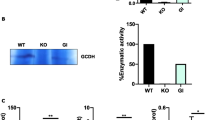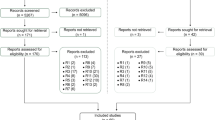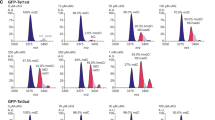Abstract
Glutaryl-CoA dehydrogenase deficiency is a neurometabolic disorder with a specific age- and region-dependent neuropathology. Between 6 and 18 mo of age, unspecific illnesses trigger acute encephalopathic crises resulting in acute striatal and cortical necrosis. We hypothesized that acute brain damage in glutaryl-CoA dehydrogenase deficiency is caused by the main pathologic metabolites 3-hydroxyglutaric and glutaric acids through an excitotoxic sequence. Therefore, we investigated the effect of 3-hydroxyglutaric acid and glutaric acid on primary neuronal cultures from chick embryo telencephalons and mixed neuronal and glial cell cultures from neonatal rat hippocampi. Exposure to glutaric acid and 3-hydroxyglutaric acid decreased cell viability in a concentration- and time-dependent fashion. This neurotoxic effect could be totally prevented by preincubation with an N-methyl-d-aspartate receptor subunit 2B (NR2B)-specific antagonist, NR2B antibodies, and an unspecific N-methyl-d-aspartate receptor blocker and was partially blocked with an NR2A-specific antagonist but not with NR2A antibodies or α-amino-3-hydroxy-5-methyl-4-isoxazole propionate receptor and metabotropic glutamate receptor antagonists. Furthermore, metabolite toxicity increased in parallel with the increasing expression of the NR2B subunit on cultured neurons from second to sixth day in vitro. We conclude from these results that 3-hydroxyglutaric acid and glutaric acid act as false neurotransmitters, in particular through NR1/2B, and that the extent of induced neurotoxicity is dependent on the temporal and spatial expression of NR1/2B in the CNS during maturation. Beyond favorable implications for treatment and long-term prognosis, glutaryl-CoA dehydrogenase deficiency is the first neurologic disease in which specific neuropathology could be experimentally linked to ontogenetic expression of a particular neurotransmitter receptor subtype.
Similar content being viewed by others
Log in or create a free account to read this content
Gain free access to this article, as well as selected content from this journal and more on nature.com
or
Abbreviations
- DIV:
-
days in vitro
- GA:
-
glutaric acid
- 3-OH-GA:
-
3-hydroxyglutaric acid
- GDD:
-
glutaryl-CoA dehydrogenase (EC 1.3.99.7) deficiency
- LDH:
-
lactate dehydrogenase
- [f]l-NAME:
-
Nω-nitro-l-arginine methyl ester
- NMDA:
-
N-methyl-d-aspartate
- NR1:
-
NMDA receptor subunit 1
- NR2A:
-
NMDA receptor subunit 2A
- NR2B:
-
NMDA receptor subunit 2B
References
Online Mendelian Inheritance in Man OMIM (Tm). Johns Hopkins University, Baltimore. MIM Number: 231670: Updated 8/13/98 World Wide Web URL: http://www.ncbi.nlm.nih.gov/omim
Goodman SI, Kohlhoff JG 1975 Glutaric aciduria: inherited deficiency of glutaryl CoA dehydrogenase activity. Biochem Med 13: 138–140.
Hoffmann GF, Trefz FK, Barth P, Böhles JH, Biggemann B, Bremer HJ, Christensen E, Frosch M, Hanefeld F, Hunneman DH, Jacobi H, Kurlemann G, Lawrenz-Wolf B, Rating D, Roe CR, Schutgens RBH, Ullrich K, Weisser J, Wendel U, Lehnert W 1991 Glutaryl-CoA deficiency: a distinct encephalopathy. Pediatrics 88: 1194–1203.
Goodman SI, Norenberg MD, Shikes RH, Breslich DJ, Moe PG 1977 Glutaric aciduria: biochemical and morphological considerations. J Pediatr 90: 746–750.
Baric I, Zschocke J, Christensen E, Duran M, Goodman SI, Leonard JV, Müller E, Morton DH, Superti-Furga A, Hoffmann GF 1998 Diagnosis and management of glutaric aciduria type I. J Inherit Metab Dis 21: 326–340.
Hoffmann GF, Athanassopoulos S, Burlina AB, Duran M, deKlerck JBC, Lehnert W, Leonard JV, Monavari AA, Müller E, Muntau AC, Naughten ER, Plecko-Starting B, Superti-Furga A, Zschocke J, Christensen E 1996 Clinical course, early diagnosis, treatment, and prevention of disease in glutaryl-CoA dehydrogenase deficiency. Neuropediatrics 27: 115–123.
Stokke O, Goodman SI, Moe PG 1976 Inhibition of brain glutamate decarboxylase by glutarate, glutaconate, and beta-hydroxyglutarate: explanation of the symptoms in glutaric aciduria?. Clin Chim Acta 66: 411–415.
Heyes MP 1987 Hypothesis: a role for quinolinic acid in the neuropathology of glutaric aciduria type I. Can J Neurol Sci 14: 441–443.
Flott-Rahmel B, Falter C, Schluff R, Fingerhut R, Christensen E, Jakobs C, Musshoff U, Fauter JD, Deufel T, Ludolph A, Ullrich K 1997 Nerve cell lesions caused by 3OH-glutaric acid: a possible mechanism for neurodegeneration in glutaric acidaemia I?. J Inherit Metab Dis 20: 387–390.
Kölker S, Ahlemeyer B, Krieglstein J, Hoffmann GF 1999 3-Hydroxyglutaric and glutaric acids are neurotoxic through NMDA receptors in vitro. J Inherit Metab Dis 22: 259–262.
Choi DW 1988 Glutamate neurotoxicity and diseases of the nervous system. Neuron 1: 623–634.
Scatton B 1993 The NMDA receptor complex. Fundam Clin Pharmacol 7: 389–400.
Williams K 1993 Ifenprodil discriminates subtypes of the N-methyl- d -aspartate receptor: selectivity and mechanisms at recombinant heteromeric receptors. Mol Pharmacol 44: 851–859.
Priestley T, Ochu E, Kemp JA 1994 Subtypes of NMDA receptor in neurones cultured from rat brain. Neuroreport 5: 1763–1765.
Portera-Cailliau C, Price DL, Martin LJ 1996 N-methyl- d- aspartate receptor proteins NR2A and NR2B are differentially distributed in the developing rat central nervous system as revealed by subunit-specific antibodies. J Neurochem 66: 692–700.
Wenzel A, Fritschy JM, Mohler H, Benke D 1997 NMDA receptor heterogeneity during postnatal development of the rat brain: differential expression of the NR2A, NR2B, and NR2C subunit proteins. J Neurochem 68: 469–478.
Tsumoto T, Hagihara K, Sato H, Hata Y 1987 NMDA receptors in the visual cortex of young kittens are more effective than those of adult cats. Nature 327: 513–514.
Carmignoto G, Vicini S 1992 Activity-dependent decrease in NMDA receptor responses during development of the visual cortex. Science 258: 1007–1011.
Hestrin S 1992 Developmental regulation of NMDA receptor-mediated synaptic currents at a central synapse. Nature 357: 686–689.
Monyer H, Burnashev N, Laurie DJ, Sakmann B, Seeburg PH 1994 Developmental and regional expression in the rat brain and functional properties of four NMDA receptors. Neuron 12: 529–540.
Ramoa AS, McCormick DA 1994 Enhanced activation of NMDA receptor responses at the immature retinogeniculate synapse. J Neurosci 14: 2098–2105.
McDonald JW, Silverstein FS, Johnston MV 1988 Neurotoxicity of N-methyl- d -aspartate is markedly enhanced in developing rat central nervous system. Brain Res 459: 200–203.
McDonald JW, Behrens MI, Chung C, Bhattacharyya T, Choi DW 1997 Susceptibility to apoptosis is enhanced in immature cortical neurons. Brain Res 759: 228–232.
Pettmann B, Louis JC, Sensenbrenner MCL 1979 Morphological and biochemical maturation of neurones cultured in the absence of glial cells. Nature 281: 378–380.
Prehn J 1992 Protektive Effekte von Pharmaka gegen exzitotoxische neuronale Schädigung in vitro und und ischämische neuronale Schädigung in vivo. Dissertation, Philipps University of Marburg, Germany
Sengpiel B, Preis E, Krieglstein J, Prehn JHM 1998 NMDA-induced superoxide production and neurotoxicity in cultured rat hippocampal neurons: role of mitochondria. Eur J Neurosci 10: 1903–1910.
Lippert K 1993 Neuroprotektive Arzneistoffeffekte gegen eine exzitotoxische Schädigung. Untersuchung an dissoziiert kultivierten Neuronen des selektiv vulnerablen Hippocampus. Dissertation, Philipps University of Marburg, Germany
Koh JY, Choi DW 1987 Quantitative determination of glutamate-mediated cortical neuronal injury in cell culture by lactate dehydrogenase efflux assay. J Neurosci Methods 20: 83–90.
Leist M, Nicotera P 1997 Breakthroughs and views: the shape of cell death. Biochem Biophys Res Commun 236: 1–9.
Laemmli UK 1970 Cleavage of structural proteins during the assembly of the head of bacteriophage T4. Nature 227: 680–685.
Merinero B, Pérez-Cerdà C, Font LM, Garcia MJ, Aparicio M, Lorenzo G 1995 Variable clinical and biochemical presentation of seven Spanish cases with glutaryl-CoA dehydrogenase deficiency. Neuropediatrics 26: 238–242.
Land JM, Goulder P, Johnson A, Hockaday J 1992 Glutaric aciduria type I: an atypical presentation together with some observations upon treatment and the possible cause of cerebral damage. Neuropediatrics 23: 322–326.
Bennett JP, Logan WJ, Snyder SH 1973 Amino acids as central nervous transmitters: the influence of ions, amino acid analogues, and ontogeny on transport systems for l -glutamic and l -aspartic acids and glycine into central nervous synaptosomes of the rat. J Neurochem 21: 1533–1550.
Standaert DG, Testa CM, Young AB, Penney JB Jr 1994 Organization of N-methyl- d -aspartate receptor gene expression in the basal ganglia of the rat. J Comp Neurol 343: 1–16.
Laurie DJ, Seeburg PH 1994 Regional and developmental heterogeneity in splicing of the rat brain NMDAR1 mRNA. J Neurosci 14: 3180–3194.
Kosinski CM, Standaert DG, Counihan TJ, Scherzer CR, Kerner JA, Daggett LP, Velcelebi G, Penney JB, Young AB, Landwehrmeyer GB 1998 Expression of N-methyl- d -aspartate receptor subunit mRNAs in the human brain: striatum and globus pallidus. J Comp Neurol 390: 63–74.
Hawkins RA, Mans AM, Davis DW, Hibbard LS, Lu DM 1983 Glucose availability to individual cerebral structures is correlated to glucose metabolism. J Neurochem 40: 1013–1018.
Cunningham VJ, Hargreaves RJ, Pelling D, Moorhouse SR 1986 Regional blood-brain transfer in the rat: a novel double-membrane kinetic analysis. J Cereb Blood Flow Metab 6: 305–315.
Wajner M, Coelho JC 1997 Neurological dysfunction in methylmalonic acidaemia is probably related to the inhibitory effect of methylmalonate on brain energy production. J Inherit Metab Dis 20: 761–768.
Ludolph AC, He F, Spencer PS, Hammerstad J, Sabri M 1991 3-Nitropropionic acid: exogenous animal neurotoxin and possible human striatal toxin. Can J Neurol Sci 18: 492–498.
Ludolph AC, Riepe M, Ullrich K 1993 Excitotoxicity, energy metabolism and neurodegeneration. J Inherit Metab Dis 16: 716–723.
Komuro H, Rakic P 1993 Modulation of neuronal migration by NMDA receptors. Science 260: 95–97.
Bliss TVP, Collingridge GL 1993 A synaptic model of memory: long-term potentiation in the hippocampus. Nature 361: 31–39.
Herkert M, Röttger S, Becker CM 1998 The NMDA receptor subunit NR2B of neonatal rat brain: complex formation and enrichment in axonal growth cones. Eur J Neurosci 10: 1553–1562.
Sprengel R, Suchanek B, Amico C, Brusa R, Burnashev N, Rozov A, Hvalby O, Jensen V, Paulsen O, Andersen P, Kim JJ, Thompson RF, Sun W, Webster LC, Grant SGN, Eilers J, Konnerth A, Li J, McNamara JO, Seeburg PH 1998 Importance of the intracellular domain of NR2 subunits for NMDA receptor function in vivo. Cell 92: 279–289.
Amir N, Elpeleg O, Shalev RS, Christensen E 1987 Glutaric aciduria type I: clinical heterogeneity and neuroradiologic features. Neurology 37: 1654–1657.
Brismar J, Ozand PT 1995 CT and MR of the brain in glutaric acidemia type I: a review of 59 published cases and a report of 5 new patients. Am J Neuroradiol 16: 675–683.
Kölker S, Ahlemeyer B, Krieglstein J, Hoffmann GF 1999 Hypothesis: delay in neuronal maturation in GA-I is a consequence of NMDA receptor downregulation by 3-OH-glutaric and glutaric acids. J Inherit Metab Dis 22: 137abstr
Stocca G, Vicini S 1998 Increased contribution to NR2A subunit to synaptic NMDA receptors in developing rat cortical neurons. J Physiol Lond 507: 13–24.
Resink A, Villa M, Benke D, Hidaka H, Möhler H, Balázs R 1996 Characterization of agonist-induced down-regulation of NMDA receptors in cerebellar granule cell cultures. J Neurochem 66: 369–377.
Tatum WO, Coker SB, Ghobrial M, Abd-Allah S 1989 The open opercular sign: diagnosis and significance. Ann Neurol 25: 196–199.
Kölker S, Ahlemeyer B, Krieglstein J, Hoffmann GF 1999 Trigger factors of acute encephalopathy in GA-I: fever and TNF-α. J Inherit Metab Dis 22: 115abstr
Acknowledgements
3-Hydroxyglutaric acid was generously custom synthesized by Prof. W. Buckel (Institute of Microbiology, Philipps University of Marburg, Germany).
Author information
Authors and Affiliations
Additional information
Supported by the Deutsche Forschungsgemeinschaft KO 2010/1–1.
Rights and permissions
About this article
Cite this article
Kölker, S., Ahlemeyer, B., Krieglstein, J. et al. Maturation-Dependent Neurotoxicity of 3-Hydroxyglutaric and Glutaric Acids In Vitro : A New Pathophysiologic Approach to Glutaryl-CoA Dehydrogenase Deficiency. Pediatr Res 47, 495–503 (2000). https://doi.org/10.1203/00006450-200004000-00014
Received:
Accepted:
Issue date:
DOI: https://doi.org/10.1203/00006450-200004000-00014
This article is cited by
-
Sensitive neurotoxicity assessment of bisphenol A using double immunocytochemistry of DCX and MAP2
Archives of Pharmacal Research (2018)
-
A cross-sectional controlled developmental study of neuropsychological functions in patients with glutaric aciduria type I
Orphanet Journal of Rare Diseases (2015)
-
Age and Brain Structural Related Effects of Glutaric and 3-Hydroxyglutaric Acids on Glutamate Binding to Plasma Membranes During Rat Brain Development
Cellular and Molecular Neurobiology (2007)
-
Biochemistry and bioenergetics of glutaryl‐CoA dehydrogenase deficiency
Journal of Inherited Metabolic Disease (2007)
-
Infant mice with glutaric acidaemia type I have increased vulnerability to 3‐nitropropionic acid toxicity
Journal of Inherited Metabolic Disease (2006)



